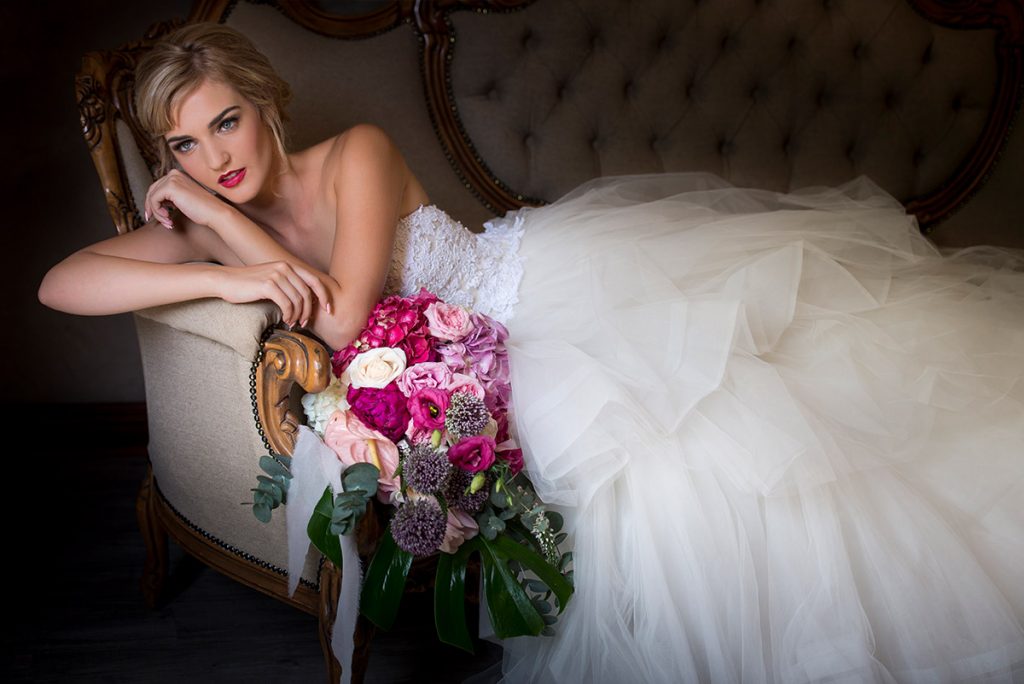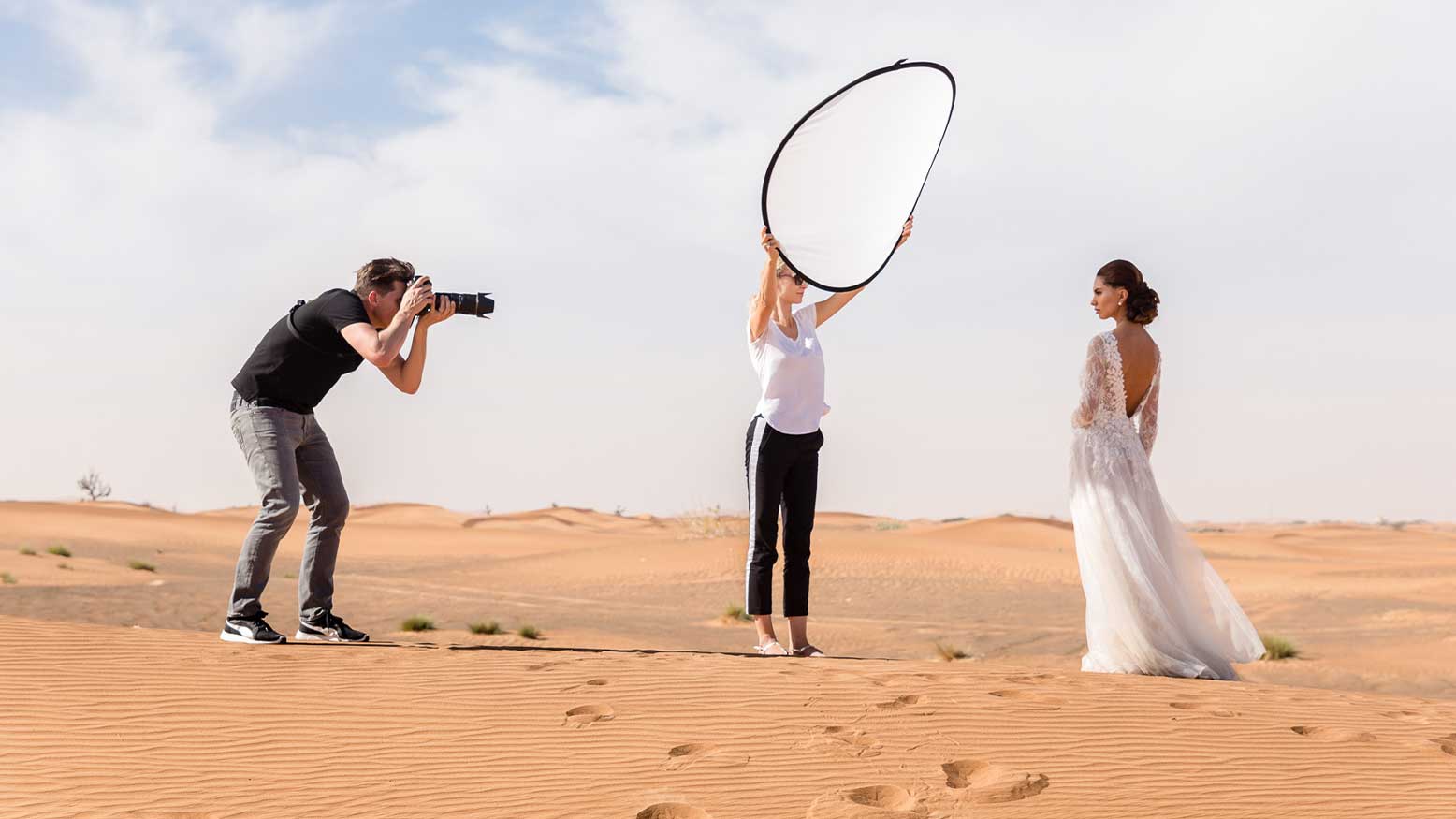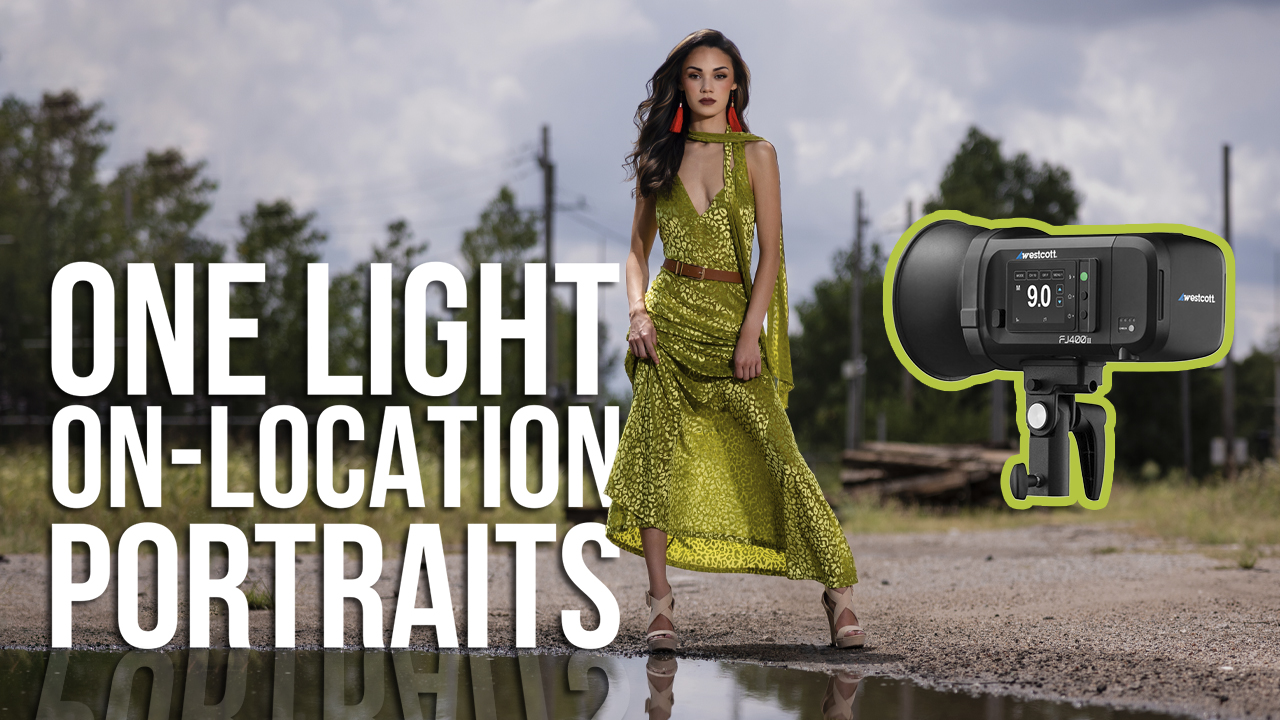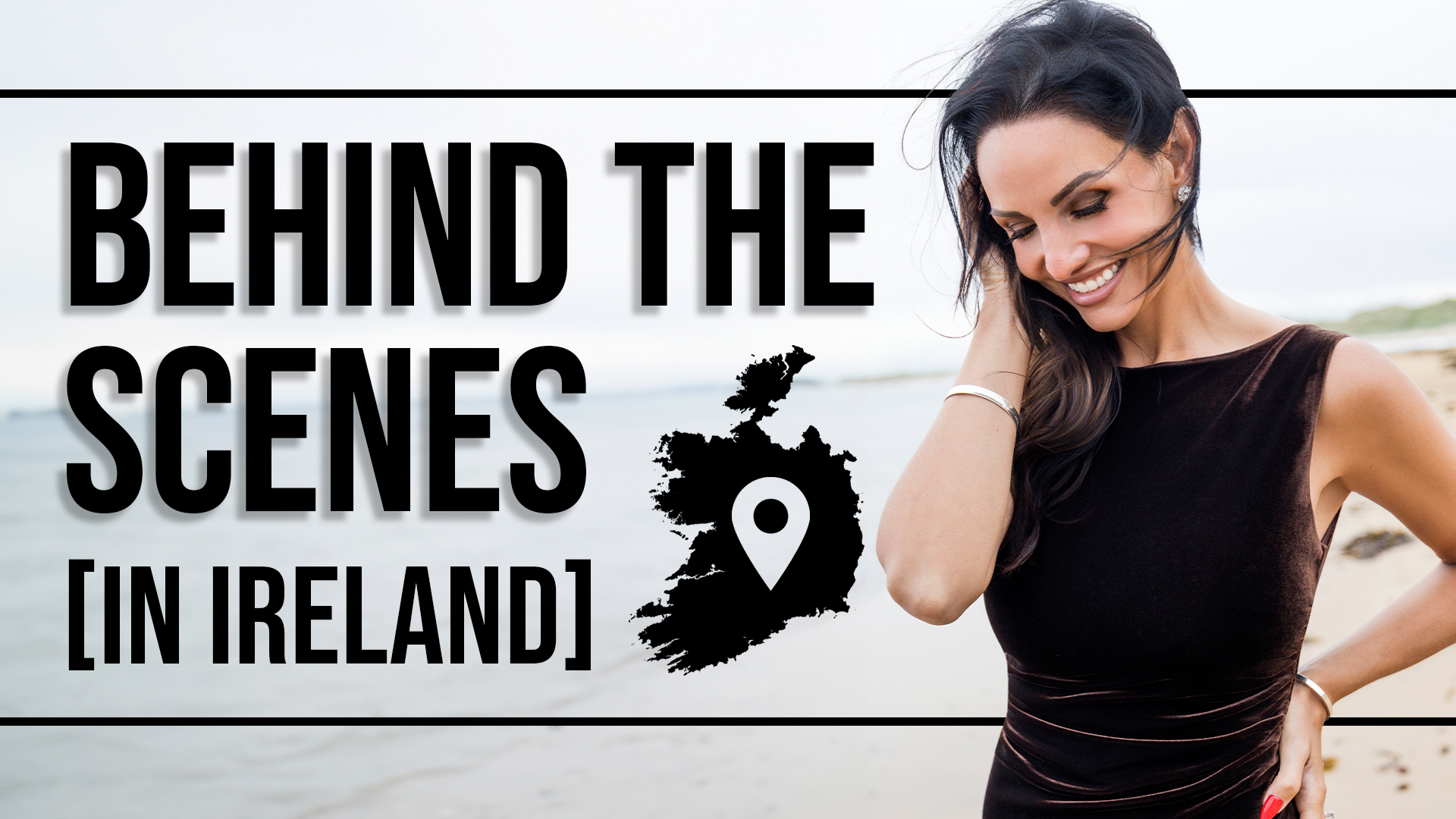Dramatic Portraits Using Natural Light with Brett Florens
Most of us start our photographic journeys shooting with naturally available ambient light. How to master this readily available light source is an art that takes thought, planning and experience. Being able to control and manipulate natural light to create Dramatic Portraits that will differentiate your brand in a congested market is essential to a profitable, sustainable business.
Dealing with direct sunlight
Since most weddings are planned for seasons with a better-than-average chance of good weather, you may need to learn how to shoot in harsh, direct light. Here is a series of images created within minutes to ensure that there were no ambient light changes. They reveal the various ways to combat unflattering light, as well as utilize it to create images that clients will be happy to hang in their homes.
Shooting with the sunlight landing directly on the model’s face poses a lot of challenges for us photographically, as it can be very unflattering if not done with premeditated intent. It is not easy for the model to look directly into the sun, so she would more than likely have a frown that could be perceived as a scowl—not a great look for a bridal portrait. The tonal gradation between highlights, midtones and shadows is very abrupt and reveals very defined shadows. The image overall has too much contrast and lots of potential for improvement. This image was shot at F4 in Aperture Priority without any exposure value compensation.
With the use of a simple scrim, which is part of the 5-in-1 reflector system, you can reduce the contrast and create an image that looks like it was shot with studio-quality lighting. This flattens the image, creating a smoother transition from highlights to midtones and midtones to shadows. It makes it much easier for the model to keep her eyes open, creating a more flattering, attractive image. Essentially what you are doing here is diffusing the harsh sunlight by using the scrim to create a softbox effect. This image was also shot at F4 in Aperture Priority without any exposure value compensation, making it one of the easiest techniques to combat harsh direct light.
Another common method for photographing flattering images in harsh light is shooting backlit. This way you don’t get the harsh shadows and it is far easier for the model, as she is not looking directly into the sun. The trick here is to effectively control your exposure. As you can see, if you don’t compensate for the heavy backlight, you will end up shooting a silhouette if you are relying solely on the camera’s light metering system to gauge your exposure.









